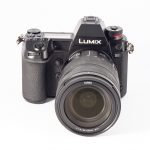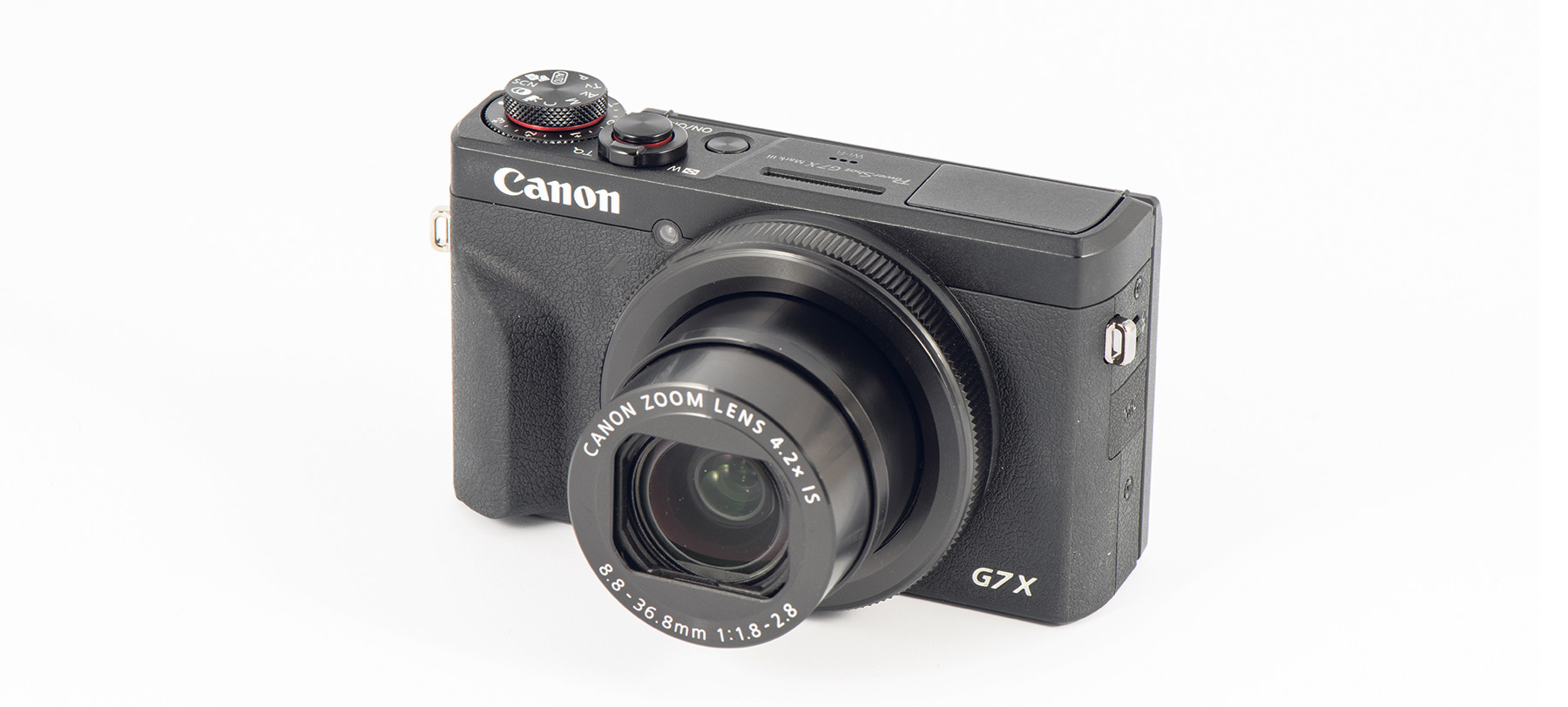
Canon Powershot G7X Mark III test: the ultimate travel companion?
Posted on Sep 11, 2019
Claiming to mix high-end stills and video functions in a lightweight and slimline package – is the G7X Mark III the ultimate travel and vlogging camera?
Canon’s G7X Mark III was launched only a few months back, alongside the G5X Mark II, which was reviewed in PN69. Both cameras aim to mix stills and video in a small, lightweight package, but the G7X Mark III gains an edge in size by losing the former’s EVF. The G7X Mark III has a 24-100mm equivalent f/1.8-2.8 zoom, so while it gives up 20mm on the G5X Mark II, it’s still versatile for lots of different subjects: cityscapes and landscapes at the wide end, street in the middle and some portraits at the long, as the compression and wide aperture combine to give some control over depth-of-field. On top of that are 1.6x and 2x digital teleconverters, and the former takes only a slight hit in sharpness compared to the optical zoom, so it’s a handy option.
Allied to the lens is a stacked 20.1-megapixel sensor and DIGIC 8 processor, which gives the G7X III some serious speed. You can shoot at 8.3fps with autofocus or 20fps with the focus and exposure locked to the first frame. On top of that there’s a 30fps Raw burst mode, and though it only lasts for about 15 frames, it’s certainly impressive. Again, focus is locked, so you’d need to use it where you’re sure there’s no subject movement.
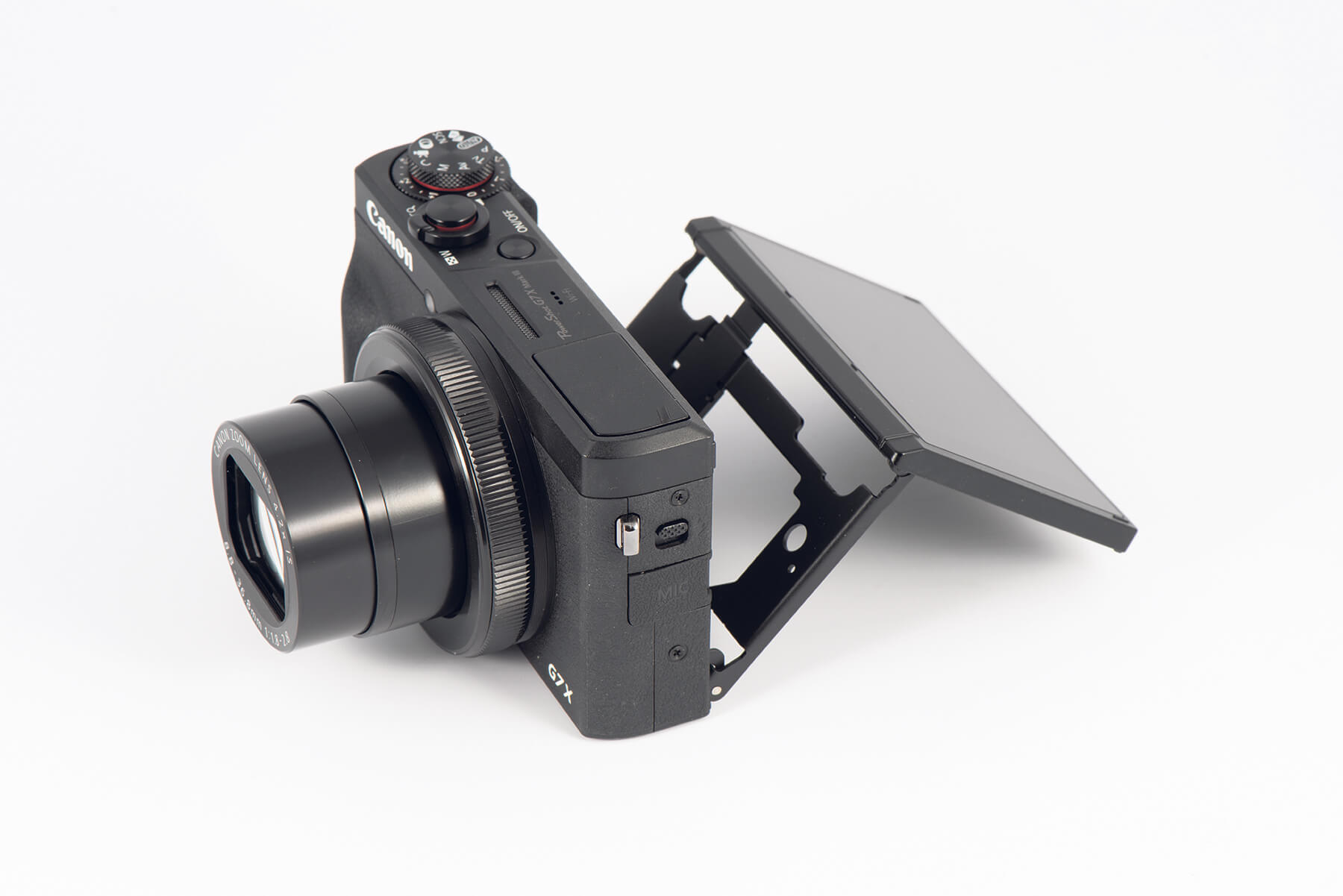
Allied to the Raw burst mode is a pre-shooting mode, which starts recording with a half press of the shutter button. Therein, about five frames are ‘safe’ if you miss the start of a sequence. The Raw burst mode makes use of the electronic shutter and this offers a maximum 1/25,600sec speed, whereas the mechanical shutter tops out at 1/2000sec. The former is handy for working in bright light therefore, and the GX7 III also has a three-stop ND, which can be set to Auto.
The G7X Mark III’s image quality is pleasing, with good colours and detail, and though there’s not masses of texture as we’re used to from larger sensors, that’s to be expected. Images look fine on screen, but obviously won’t support big prints. You can find out more about this in the sections on ISO, exposure latitude and lens quality, below.
Compact cameras often fall down on handling, especially if you’re used to bigger CSC or DSLR bodies. Canon has done a good job on the G7X III’s ergonomics, though, and while the body is small, it never felt cramped to me. The contact points are sculpted and rubberised, and therefore give a decent grip, and though there’s obviously not that much purchase, because the camera is so light, you’re not fighting to support it. The flip-out screen is of course handy for high- and low-angle work, and its touchscreen functions augment the physical controls well. For instance, there’s a virtual button for ISO within easy reach of your thumb. However, while there are four input dials on the body, it could really do with a front dial for your index finger.
Performance-wise, it didn’t feel sluggish in any regard. The camera turns on and off quickly with the lens retracting for travel, and the only criticism I’d have there is that the lens won’t return to its previous focal length when you turn it back on. Settings like aperture are stored, so why not focal length, too? It’s quite annoying if you’ve set up a shot and the camera goes to sleep, as you then have to reframe again on start-up.
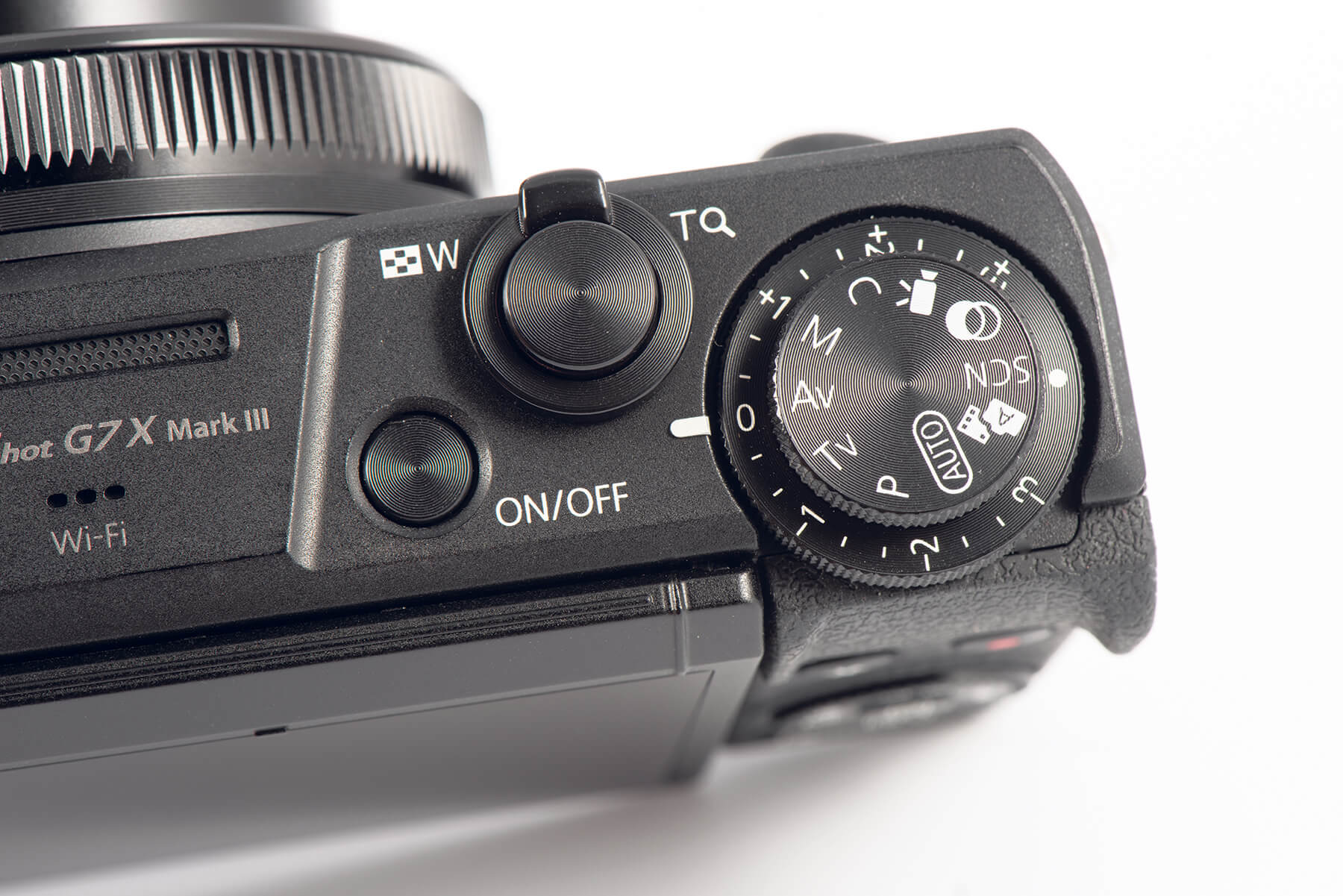
Image Control design and layout is excellent making the G7X Mark III a delight to use. The on/off button is large and positive, too
Focusing was fast and accurate for a compact, and the face+tracking AF mode works very well, even holding focus as you move towards or away from the subject in servo AF mode. A quick tap of the touchscreen locks it on the target and hit rate was near 100%, though in fairness it’s not dealing with a razor-thin depth-of-field as you’d get on a larger sensor. When using the single focus mode, I found spot AF better than the one-point AF area, which has an area large enough to get confused. When shooting stills, the servo AF mode chunters away somewhat, but it gets the job done without too much hunting overall.
Manual focusing feels a bit weird at first as it’s done using up and down arrows on the touchscreen, rather than with a physical dial, but it very quickly made sense to me and there are focus peaking and zoom settings to help out. On top of that, there’s a focus bracketing mode that’s activated via the main menu. Therein you can set the number of frames and the focus spacing, and a sequence is in the next shot. It works really well, especially for focusing stacking techniques.
The G7X III is not blessed with masses of battery life, and I tended to get around 290 shots per charge, though this depended on exposure mode, temperature and all sorts of other things. On the plus side, you can charge it via the camera’s USB-C port, so that means using external power packs or car chargers is easy. Basically, that’s a big tick in the travel box.
PN’s Daisy Dickinson on the G7X Mark III’s vlogging credentials
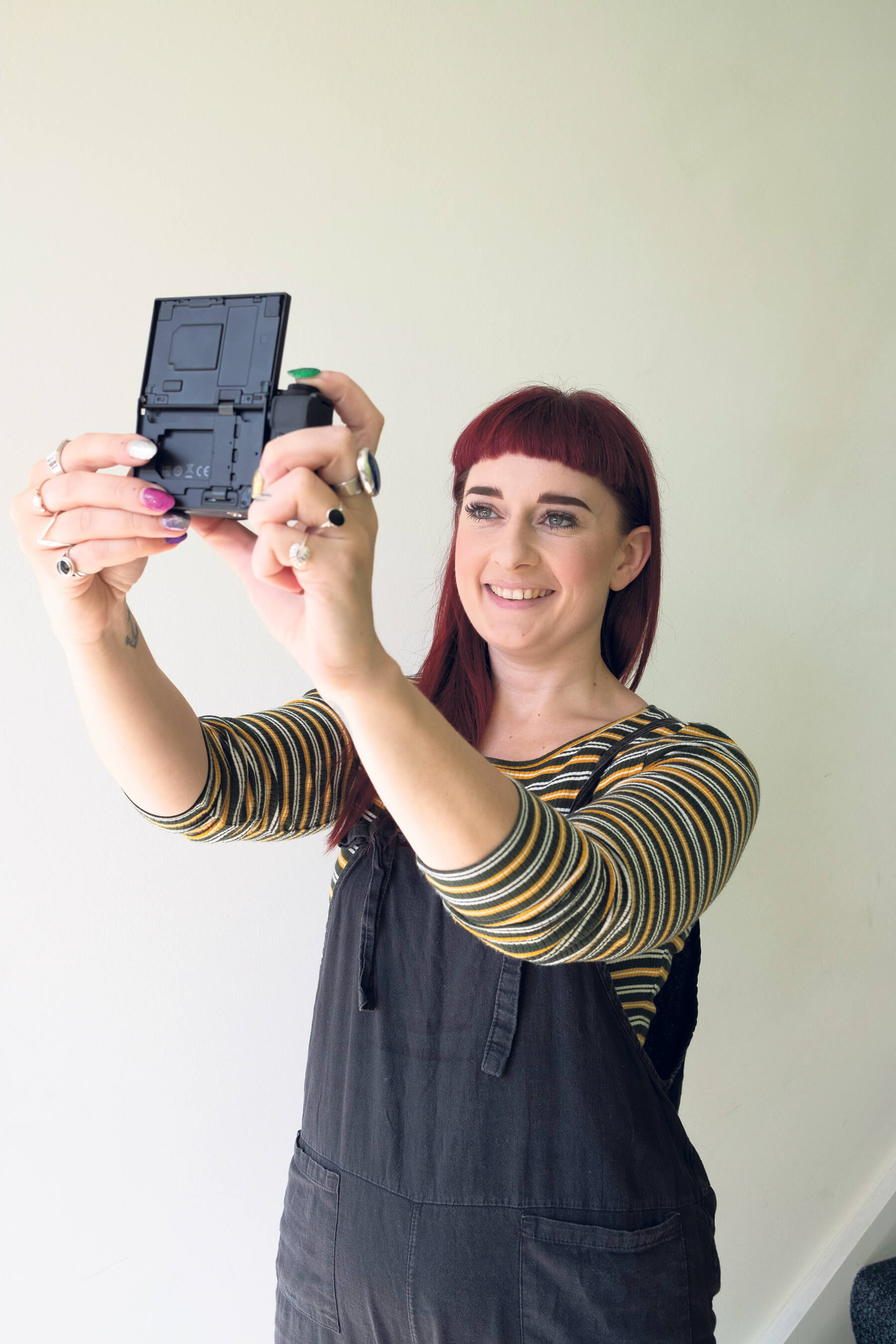
“Canon’s PowerShot G-range is popular in the vlogging industry, and with good reason. The cameras are good at creating great-quality video, fast. And having small, light bodies, they’re particularly useful, especially when you consider most footage will be shot from an extended arm that wouldn’t appreciate extra weight.
“The G7X Mark III certainly builds on this. It has plenty of new features that YouTubers have been waiting for. When it comes to shooting in 4K, the recording area is usually cropped into the sensor, meaning you need wider lenses to get everything in, but the G7X Mark III boasts 4K at 30fps with no crop factor. This is huge for such a dinky camera! There’s also 120fps at 1080p, a feature previously reserved for the Canon EOS-1DX Mark II, so it’s possible to create beautiful, cinematic slow-mo footage with a camera small enough to fit in your pocket.
“There are some nice handling upgrades from the previous model, too, like the flip-up screen, an on-screen record button, which makes it easy to check you’re rolling, and a mic jack included, answering the prayers of many G-series fans – though as there’s no hotshoe, you’ll need to find a way of mounting it. You can also run the camera via the USB-C port, not just charge it, which should mean no more blinking battery icon of death halfway through a recording. Vertical video shooting might make some classic videographers’ skin crawl, but it’s a welcome addition for content creators shooting for Instagram stories, where footage can be sent straight to your device ready for upload at 16:9 without having to rotate it. On top of this, livestreaming to YouTube is also possible. Having used the G7X Mark III, I’d feel confident in using it as not just a second shooter, but as a main vlogging camera.”
Performance: ISO

Canon G7XIII ISO 800
Click the images to see a larger view
With an ISO range spanning 125 to 12,800, and expandable to 25,600, the G7X Mark III put in a reasonable performance, despite its small sensor size. Raw test exposures were made throughout the ISO range and compared at 100%. Noise is minimal up to ISO 400, and the 800 and 1600 settings are still very usable with only a little loss of detail. At 3200 and 6400, fine detail becomes more disturbed, and things get quite fuzzy at the 8000, 10,000 and 12,800 settings, where colour saturation is also affected. The expanded 25,600 is very blotchy.
Performance: exposure latitude

Click the images to see a larger view
To test the editing latitude of the G7X Mark III’s Raws, we set up test exposures, varying the compensation by +/-3EV, then corrected in Photoshop. In the corrected overexposed Raws, there was some highlight detail returned at +1EV, though also a slight loss of saturation. At +2EV highlights started to grey, and this got progressively worse at +3EV. Results were better with the underexposed shots. All showed some increase in noise, but the -1EV pic was very close to the 0EV file when corrected. The -2EV shot showed more noise, although it was still very usable, but -3EV showed much more pronounced noise.
Performance: lens quality
Click the images to see a larger view
The G7X Mark III has a 8.8-36.8mm (24-100mm equivalent) zoom with a bright but variable aperture of f/1.8 to f/2.8. Testing the lens for sharpness, we shot throughout the aperture range at the equivalent of 24mm, 50mm and 100mm. At 24mm, results were acceptable in the middle at f/1.8, but became soft at the edges. Sharpness in the centre improved to f/2.8, and stayed at its peak until around f/9. At the edges, sharpness was best at f/8. At the 50mm equivalent, results were much better, with good centre and edge sharpness wide open, peaking at around f/3.5 and well maintained at the smaller apertures. At the 100mm equivalent, sharpness was a little lacking wide open at the centre and edge, but quickly improved, peaking at f/4 and not losing clarity until about f/9. There was some fringing and flare noted, but mainly at the 24mm end when shooting into the light. Some barrel distortion was noticeable at 24mm, and there was moderate vignetting at the widest aperture settings, but both were easily corrected in Raw.
Verdict
In an age where compact cameras are increasingly losing market share to smartphones, the G7X Mark III has its work cut out. But with decent enough image quality, good handling, responsive AF and plenty of features you can’t find on a smartphone, this camera does plenty to convince.
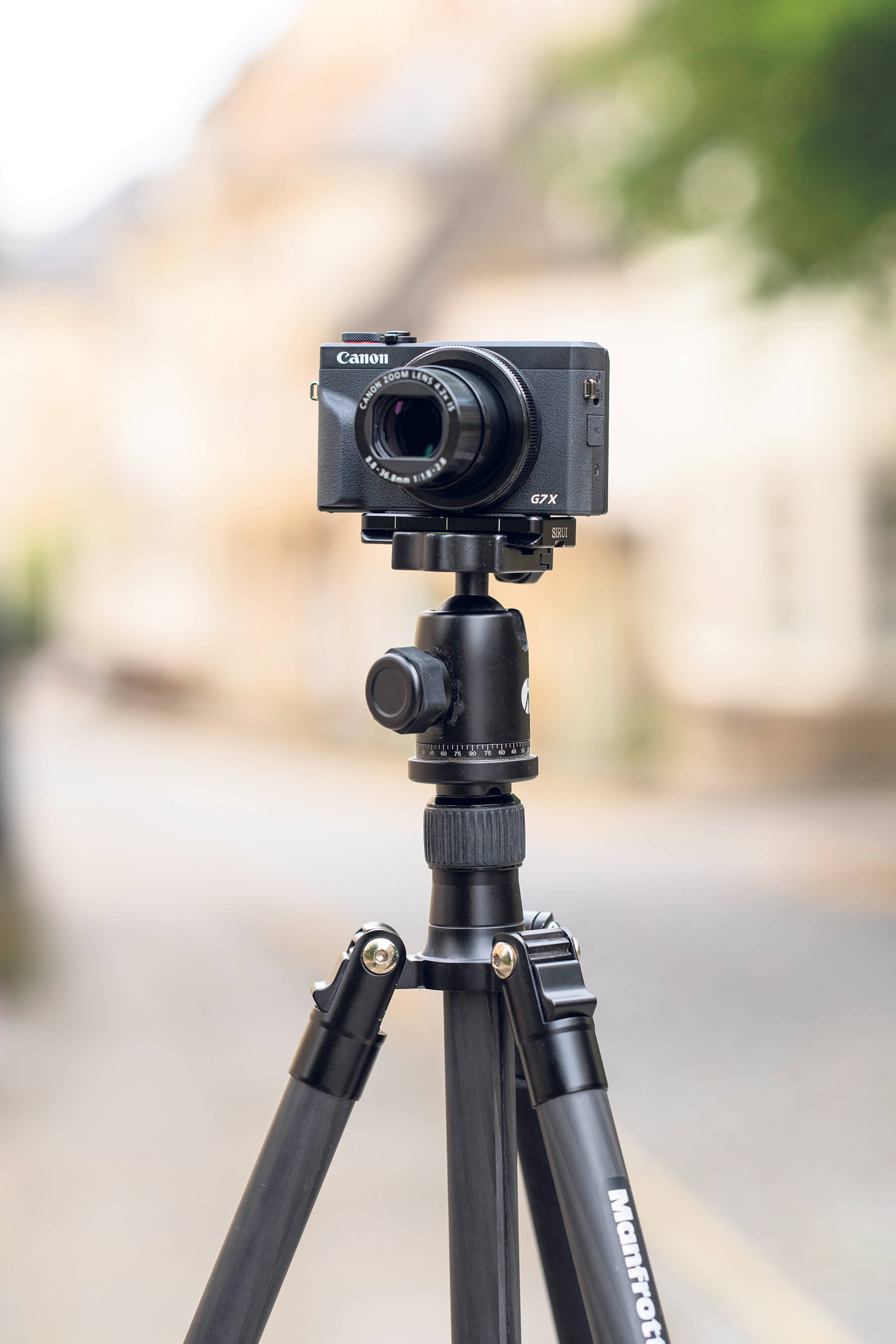
Pros: Face Tracking AF, 4K video, good handling
Cons: No accessory shoe to hold microphone
| Features | 22/25 | Lots of high-end features, improved video, versatile zoom range |
| Performance | 23/25 | The stacked sensor allows very fast burst shooting and good AF |
| Handling | 23/25 | Small and light, but that doesn’t compromise handling |
| Value for money | 21/25 | Good performance, but it comes at budget DSLR money |
| Overall | 89/100 | A full-featured and very usable compact for travel or vlogging |
For more information, please visit the Canon website.
As featured in Issue 70 of Photography News.

























